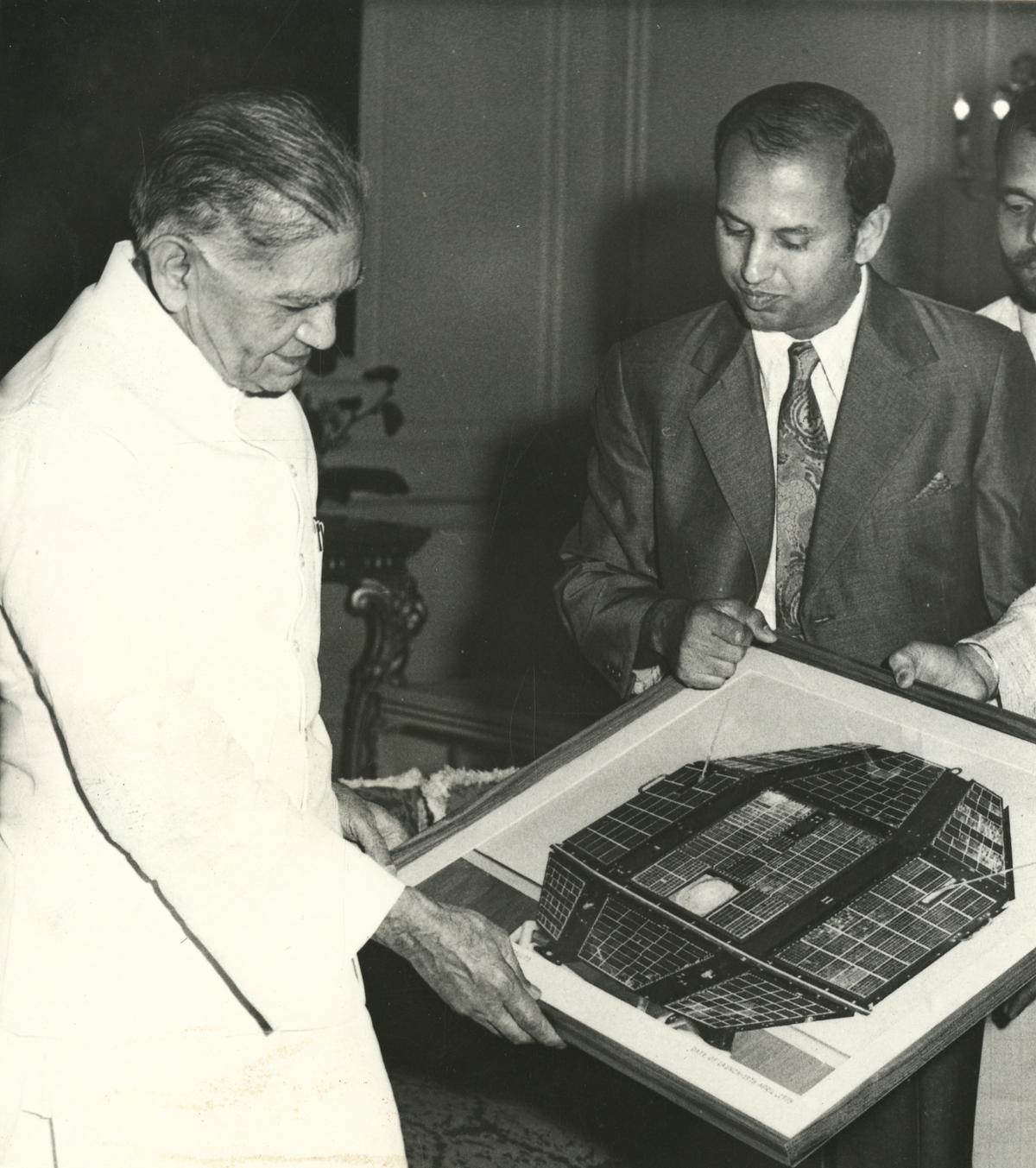50 years since Aryabhata was launched

What is Aryabhata?
Named after the ancient Indian mathematician and astronomer (5th century), Aryabhata is the first satellite in India. On April 19, 1975, with the help of the Soviet Union, the launch of this locally built satellite marked the beginning of the Indian space age, launching from Kapustin Yar. The successful release means that India is just the 11th country in the world to enter orbit.
Aryabhata is designed as a 26-faced polyhedron with a diameter of 1.4 meters and a weight of 360 kilograms. Unless the top and bottom, each of the other 24 faces is covered with solar panels.
After reaching orbit, Aryabhata bypasses the Earth every 96.3 minutes. The satellite has an inclination of 50.7 degrees, and the satellite is moving around (farest) in orbit 619 km, while the Perigee (closest method) is 563 km.
Under the task of experimenting with solar physics and X-ray astronomy, Aryabhata had the lowest success rate (observation of X-ray sources), and then a power failure stop experiment was performed after five days on orbit. In addition to providing scientists with valuable experience in building satellites, Aryabhata also collected information within its five operating days. It continues to transmit more time. Aryabhata re-entered the Earth’s atmosphere on February 10, 1992, corresponding to the orbital life span of nearly 17 years.
Learn Rocket Science
Although India’s satellite program was founded in the 1970s, scientists in the country have been preparing for India’s indigenous space programs since the Cold War competed for the space race between the United States and the Soviet Union. In the 1960s, the Indian Space Research Organization (ISRO) developed a series of sound rockets for atmospheric and meteorological research under the Rohini Rocket program. After success, ISRO turned its attention to building our own satellites.
Physicist and ISRO founder Vikram Sarabhai appointed a team of 25 scientists, engineers and researchers to design and develop satellites in the physics research laboratory in Ahmedabad. Sarabhai commissioned space scientist Udupi Ramachandra Rao’s mission to guide operations and assemble satellites in Bangalore.
Considering that Rao himself has limited experience in making satellites, the established young team must learn instantly. While this is not an easy task in any industry, in rocket science, it can be a double difficulty.
An employee checked the coded information of the first Indian satellite, Aryabhata, which was received at the ground telemetry receiving station in Sriharikota. The success of Aryabhata means that India has also established the necessary ground station functions. For example, the station may also issue commands to the satellite to perform a specific function. |Picture source: Indian Archives
The original design they came up with was a 100kg satellite launched using a scout launch vehicle. The Indians saw this reliable launch vehicle as an affordable option.
However, the ongoing Cold War meant that the Soviets were concerned about this cooperation. In 1971, Indian Prime Minister Indira Gandhi received information from the Indian ambassador to Moscow, saying that the Soviet Academy of Sciences was willing to assist India in launching its first satellite. India finally decided to take the Soviet approach.
Meanwhile, Rao gathered his team in the industrial area of Peenya in Bengaluru, which will serve as the site of the country’s first indigenous satellites. Four sheds in the area were repurposed for a workstation that was located above a lab that was cleared out to facilitate work immediately.
What is the name?
With Rao and his team working on the satellite and reaching an agreement between the Indians and the Soviets, it seems possible to decide on the timing before the launch date. However, with the sudden halt of the entire Indian space program, Sarabhai died on December 30, 1971.
Despite delays in final details or financial support, Rao and his team tilted towards the finish line. Despite the fact that they are building the satellite without naming it – they hope to solve this problem with the support of PM.
To get the Prime Minister’s support, the scientists decided to provide Indira Gandhi with three names from which she could choose one for the satellite. Apart from Aryabhata, Mitra (represents a friendly relationship between India and the Soviet Union) and Jawahar (citing the spirit of independence) are the names of the suggestion. Indira Gandhi chose Aryabhata.
A success story
The satellite will be placed outside the barriers and most obstacles by names and will be launched on April 19, 1975. Although most of the leading space forces at the time did not expect India to do this, Aryabhata successfully showed the world that India and India could build their own satellites. The template has been repeated several times in the following decades, as India established its own spatial power despite its limited budget.

On May 24, 1975, in Rashtrapati Bhavan, New Delhi, convened the photos taken by President Fakhruddin Ali Ahmed. Photos show Rao shows photos of the Aryabhata satellite. |Picture source: Indian Archives
Success was immediately celebrated in the country and elsewhere. April 20, 1975, Hindu On the national front page, the title is “India enters the space age: satellites placed in orbit”. Within hours of successful release, the postal department announced a special stamp to mark this historical milestone – the first in itself. The Soviet Union also released stamps for the second year, which included friendly cooperation between the two countries.
Although Aryabhata has collected data for less than five days, it is a success story as it shows that young engineers and scientists in the country can overcome adversity to achieve great feats. Prior to this, India achieved achievements in only 10 other countries (US, USSR, West Germany, China, France, UK, Australia, Canada, Japan and Italy). Since then, India has continued to achieve its feat with its space program, and so far fewer countries have managed fewer countries.
publishing – April 19, 2025 12:12 AM IST




